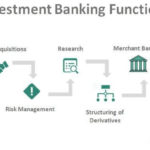Finest Mortgage Charges
Are you inside the market for a model new dwelling or making an attempt to refinance your current mortgage? One of the essential very important points to ponder when making such a large financial dedication is the charge of curiosity you’ll be paying in your mortgage. A small distinction in charge of curiosity can suggest 1000’s of {{dollars}} in monetary financial savings or added payments over the lifetime of your mortgage. That is why it is very important uncover methods to secure the excellent mortgage costs doable.
First points first, it is important to understand how mortgage charges of curiosity are determined. Mortgage charges of curiosity are determined by a variety of parts, along with the financial system, inflation, and the Federal Reserve’s monetary protection. Nevertheless, essential think about determining your mortgage charge of curiosity is your credit score rating score. The higher your credit score rating score, the further seemingly you are to qualify for a lower charge of curiosity. So, sooner than you start trying to find a mortgage, guarantee that to confirm your credit score rating score and take steps to reinforce it if important.
Probably the best strategies to reinforce your credit score rating score is to repay any glorious cash owed you might need. Bank card balances, pupil loans, and several types of debt can all negatively affect your credit score rating score. By paying off these cash owed, you’ll not solely improve your credit score rating score, nonetheless you’ll even be in a higher place to afford a greater mortgage mortgage.
One different methodology to reinforce your credit score is to only make certain you might be paying your funds on time. Late funds can have a significant opposed affect in your credit score rating score, so it is very important simply make certain you pay your funds on time. You presumably can organize computerized funds to just remember to in no way miss a price.
As quickly as your credit score rating score is in superb situation, you may start shopping for spherical for the excellent mortgage costs. The easiest method to do this is to get quotes from quite a lot of lenders. Ensure that to match the charges of curiosity, costs, and shutting costs associated to each mortgage. You may even use on-line mortgage calculators to get an considered how loads your month-to-month funds will doubtless be for each mortgage.
One different approach to secure the excellent mortgage costs is to make an even bigger down price. An even bigger down price signifies that you’ll have to borrow a lot much less money, which may result in a lower charge of curiosity. So, for individuals who can afford to make an even bigger down price, it’s undoubtedly value considering.
One different approach to secure the excellent mortgage cost is to ponder a government-backed mortgage, similar to an FHA or VA loan. These loans are backed by the federal authorities, which signifies that the lender is at a lot much less menace for individuals who default in your mortgage. In consequence, these loans sometimes embrace lower charges of curiosity.
Lastly, keep in mind a fixed-rate mortgage over an adjustable-rate mortgage. An adjustable-rate mortgage might have an charge of curiosity that will change over time, whereas a fixed-rate mortgage has an charge of curiosity that stays the similar all by way of the lifetime of the mortgage. Whereas an adjustable-rate mortgage might have a lower charge of curiosity initially, it might truly end up costing you further in the long run if charges of curiosity rise.
By following the following suggestions, you’ll be properly in your approach to securing the excellent mortgage costs and saving 1000’s of {{dollars}} over the lifetime of your mortgage. Bear in thoughts, a small distinction in charge of curiosity might make a large distinction in your month-to-month payments and the general amount you’ll pay over the lifetime of your mortgage. So, take the time to purchase spherical and consider costs, and make it doable in your credit score rating score is in superb situation sooner than you apply for a mortgage. With a little bit of little little bit of effort, you presumably can secure the excellent mortgage costs and make your dream of homeownership a actuality.
Forms of mortgages

There are quite a lot of types of mortgages obtainable to debtors. Just a few of the commonest embrace:
1.Fastened-rate mortgages: These mortgages have an charge of curiosity that continues to be the similar all by way of the lifetime of the mortgage. Which means the borrower's month-to-month funds will preserve the similar, regardless of modifications in charges of curiosity.
1.1A fixed-rate mortgage is a sort of dwelling mortgage by which the charge of curiosity stays the similar for the complete time interval of the mortgage. Which means the borrower's month-to-month funds will doubtless be fixed all by way of the lifetime of the mortgage, regardless of modifications in charges of curiosity. The time interval of a fixed-rate mortgage can fluctuate from 10 to 30 years, with the commonest being 30-year mortgages.
The advantage of a fixed-rate mortgage is that the borrower can funds for his or her month-to-month funds, as they know exactly how loads they're going to be required to pay each month. Moreover, if charges of curiosity rise, the borrower will not be going to be affected, as their charge of curiosity is mounted.
Nevertheless, the downside of a fixed-rate mortgage is that if charges of curiosity fall, the borrower will not be going to revenue, as their charge of curiosity is locked in. Moreover, they may ought to pay further in curiosity over the lifetime of the mortgage, as as compared with an adjustable-rate mortgage, which may have a lower preliminary charge of curiosity.
It is significant to note that whereas fixed-rate mortgages current the borrower with stability and predictability, they may not always be the most suitable option for everyone. It is significant to weigh the professionals and cons of a fixed-rate mortgage and consider it with totally different selections sooner than making a name.
2.Adjustable-rate mortgages (ARMs): These mortgages have an charge of curiosity that will change over time. The charge of curiosity is often mounted for an preliminary interval, after which it might truly alter based mostly totally on modifications obtainable in the market. Which means the borrower's month-to-month funds might improve or decrease over time.
2.1An adjustable-rate mortgage (ARM) is a sort of dwelling mortgage by which the charge of curiosity can change over time. The charge of curiosity is often mounted for an preliminary interval, after which it might truly alter based mostly totally on modifications obtainable in the market. Which means the borrower's month-to-month funds might improve or decrease over time. The preliminary charge of curiosity is often lower than that of a fixed-rate mortgage, nonetheless the menace is that it might truly improve over time.
The time interval of an adjustable-rate mortgage can fluctuate from 1 to 10 years, with the commonest being 5/1 ARMs, which have a tough and quick cost for the main 5 years, then alter yearly.
The advantage of an adjustable-rate mortgage is that the preliminary charge of curiosity is often lower than that of a fixed-rate mortgage, which could make the month-to-month funds further cheap. Moreover, if charges of curiosity fall, the borrower's month-to-month funds will decrease.
The downside of an adjustable-rate mortgage is that if charges of curiosity rise, the borrower's month-to-month funds will improve, which could make it troublesome to funds for and will set off financial stress. Moreover, if charges of curiosity rise significantly, the borrower may be unable to refinance their mortgage and will end up with a greater charge of curiosity than they initially anticipated.
It is significant to note that whereas adjustable-rate mortgages might provide a lower preliminary charge of curiosity and further flexibility, moreover they embrace further menace. It is significant to weigh the professionals and cons of an adjustable-rate mortgage and consider it with totally different selections sooner than making a name.
3.FHA loans: These loans are backed by the Federal Housing Administration (FHA) and are designed to help first-time dwelling shoppers or these with lower credit score rating scores qualify for a mortgage. They generally require a lower down price and have further versatile credit score rating and earnings requirements than typical loans.
3.1FHA loans are mortgages which could be insured by the Federal Housing Administration (FHA). They're designed to help first-time dwelling shoppers or these with lower credit score rating scores and reduce down funds qualify for a mortgage.
The FHA models pointers for the types of loans it insures, and it models limits on the amount of the mortgage. The mortgage limits fluctuate counting on the world of the nation you reside in.
One of many benefits of FHA loans is that they often require a lower down price and have further versatile credit score rating and earnings requirements than typical loans. Debtors might have elevated debt-to-income ratios and reduce credit score rating scores than what's often required for the standard mortgage.
The FHA moreover requires that debtors pay mortgage insurance coverage protection (MIP), which is a sort of insurance coverage protection that protects the lender in case the borrower defaults on their mortgage. This insurance coverage protection is often required for the lifetime of the mortgage.
Nevertheless, FHA loans moreover embrace certain disadvantages. For occasion, the mortgage insurance coverage protection premium (MIP) is often elevated than that of an ordinary mortgage, which could improve the basic worth of the mortgage. Moreover, the FHA has certain property requirements that should be met, and some properties couldn't qualify for an FHA mortgage.
It is significant to note that FHA loans might be a pleasant chance for a lot of who couldn't qualify for the standard mortgage, nonetheless it is vital to weigh the professionals and cons and consider it with totally different selections sooner than making a name.
4.VA loans: These loans are backed by the Division of Veterans Affairs (VA) and could be discovered to active-duty navy members, veterans, and certain surviving spouses. They generally require no down price and have further relaxed credit score rating and earnings requirements than typical loans.
4.1FHA loans are mortgages which could be insured by the Federal Housing Administration (FHA). They're designed to help first-time dwelling shoppers or these with lower credit score rating scores and reduce down funds qualify for a mortgage.
The FHA models pointers for the types of loans it insures, and it models limits on the amount of the mortgage. The mortgage limits fluctuate counting on the world of the nation you reside in.
One of many benefits of FHA loans is that they often require a lower down price and have further versatile credit score rating and earnings requirements than typical loans. Debtors might have elevated debt-to-income ratios and reduce credit score rating scores than what's often required for the standard mortgage.
The FHA moreover requires that debtors pay mortgage insurance coverage protection (MIP), which is a sort of insurance coverage protection that protects the lender in case the borrower defaults on their mortgage. This insurance coverage protection is often required for the lifetime of the mortgage.
Nevertheless, FHA loans moreover embrace certain disadvantages. For occasion, the mortgage insurance coverage protection premium (MIP) is often elevated than that of an ordinary mortgage, which could improve the basic worth of the mortgage. Moreover, the FHA has certain property requirements that should be met, and some properties couldn't qualify for an FHA mortgage.
It is significant to note that FHA loans might be a pleasant chance for a lot of who couldn't qualify for the standard mortgage, nonetheless it is vital to weigh the professionals and cons and consider it with totally different selections sooner than making a name.
5.USDA loans: These loans are backed by the US Division of Agriculture (USDA) and could be discovered to debtors making an attempt to buy a home in a rural area. They generally require no down price and have further relaxed credit score rating and earnings requirements than typical loans.
USDA loans, additionally known as Rural Improvement loans, are mortgages which could be insured by the US Division of Agriculture (USDA). They're designed to help low- and moderate-income households in rural areas purchase or improve a home.
One of many predominant benefits of USDA loans is that they often do not require a down price, they often even have further lenient credit score rating and earnings requirements than typical loans. Moreover, they do not require mortgage insurance coverage protection, which could save debtors 1000's of {{dollars}} over the lifetime of the mortgage.
The USDA moreover models limits on the amount which may be borrowed, which varies by location. The mortgage limits are based mostly totally on the median earnings and residential prices inside the area.
One different advantage of USDA loans is that they are obtainable for every purchase and refinance transactions and could be utilized to purchase a model new dwelling, restore an present dwelling, or to refinance an present USDA mortgage.
Nevertheless, USDA loans do have certain disadvantages. For occasion, they're solely obtainable for properties in rural areas, which could limit the provide of properties for debtors. Moreover, there may be limits on the amount which may be borrowed, which varies by location, and there are moreover earnings limits that should be met.
It is significant to note that USDA loans might be a pleasant chance for a lot of who reside in rural areas and have lower earnings, nonetheless it is vital to weigh the professionals and cons and consider it with totally different selections sooner than making a name.
6.Jumbo loans: These loans are for debtors making an attempt to buy a high-end dwelling or luxurious property. They generally require an even bigger down price and have stricter credit score rating and earnings requirements than typical loans.
Jumbo loans are mortgages that exceed the utmost mortgage limits set by government-sponsored enterprises (GSEs) similar to Fannie Mae and Freddie Mac. These limits fluctuate by location and are sometimes elevated in costlier areas. As a results of jumbo loans is not going to be backed by the GSEs, they're considered to be riskier for lenders and due to this, they often have stricter underwriting pointers and higher charges of curiosity than conforming loans.
One of many predominant traits of jumbo loans is that they often require an even bigger down price than conforming loans. The exact amount can fluctuate counting on the lender and the mortgage program, nonetheless it is sometimes between 10% and 20%.
One different attribute of jumbo loans is that they sometimes require a greater credit score rating score than conforming loans. Most lenders would require a credit score rating score of at the least 700 and some even require a score of 720 or elevated.
Jumbo loans moreover usually have elevated charges of curiosity than conforming loans. It is as a result of jumbo loans are considered to be elevated menace and subsequently, lenders will price a greater charge of curiosity to compensate for that menace.
It is value noting that some lenders moreover provide jumbo mortgage selections with adjustable-rate mortgages (ARM) which might presumably be helpful for some debtors for the purpose that charge of curiosity may be lower initially than a fixed-rate mortgage, nonetheless it'd improve over time.
In summary, jumbo loans are mortgages that exceed the utmost mortgage limits set by GSEs and have stricter underwriting pointers, larger down price requirements, elevated credit score rating score requirements and higher charges of curiosity than conforming loans.
7.Balloon loans: These loans have a time interval of 5 to seven years and the borrower pays curiosity only for that time, on the end of that point interval, the remaining steadiness is due in full.
A balloon loan is a sort of mortgage that has a shorter time interval than the on a regular basis mortgage mortgage, usually 5 to 7 years, nonetheless a loads larger final price, usually known as the "balloon price." This final price is often a giant lump sum that's the identical as the remaining steadiness of the mortgage.
The precept attribute of a balloon mortgage is that the borrower solely makes smaller, interest-only funds all through the mortgage time interval, with the understanding that the remaining steadiness will doubtless be due in full on the end of the time interval. Which means the borrower should give you a giant sum of money to repay the mortgage or refinance the mortgage right into a model new one.
Balloon loans might be helpful for some debtors because of they sometimes have lower month-to-month funds than an ordinary mortgage, which could make them further cheap inside the temporary time interval. They might also be an outstanding chance for debtors who depend on their earnings to increase significantly in the end, making them further able to afford the large balloon price.
Nevertheless, balloon loans might also be harmful for debtors, as they may not have the required funds to repay the balloon price when it comes due. If a borrower is unable to refinance the mortgage or give you the required funds to repay the balloon price, they may end up defaulting on the mortgage and dropping their property.
It is significant to weigh the professionals and cons of balloon loans and keep in mind your particular person financial state of affairs and targets sooner than deciding if this type of mortgage is greatest for you. It can also be advisable to talk to a financial advisor or a mortgage expert that may help you understand the risks and benefits of a balloon mortgage and uncover totally different selections which can be obtainable to you.
8.Reverse Mortgages: A reverse mortgage is a sort of mortgage that allows house owners 62 and older to remodel a portion of their dwelling equity into cash.
A reverse mortgage is a sort of mortgage that allows house owners who're 62 or older to remodel a portion of the equity of their dwelling into cash. In distinction to an ordinary mortgage, the place the borrower makes funds to the lender, with a reverse mortgage, the lender makes funds to the borrower.
The precept attribute of a reverse mortgage is that the borrower does not ought to make any month-to-month funds to the lender as long as they proceed to reside inside the dwelling and preserve it. As an alternate, the mortgage steadiness will improve over time as curiosity and totally different costs are added to the steadiness. The mortgage turns into due when the borrower strikes out of the home utterly, sells the home, or passes away.
The amount which may be borrowed with a reverse mortgage is decided by the value of the home, the age of the youngest borrower, and the current charge of curiosity. The funds might be acquired as a lump sum, a line of credit score rating, or as month-to-month funds, counting on this technique and the borrower's desires.
Reverse mortgages might be helpful for seniors who're trying to find a method to enhance their retirement earnings, repay present debt, or make dwelling enhancements. In addition they might assist seniors to stay of their properties and age in place.
Nevertheless, reverse mortgages even have some disadvantages, similar to extreme costs and costs, which might be very important and will eat up a giant portion of the mortgage proceeds. Moreover, the mortgage steadiness will improve over time, which could eat into the equity of the home and can go away a lot much less for heirs when the borrower transfer away.
It is significant to ponder your particular person financial state of affairs and targets sooner than deciding if a reverse mortgage is greatest for you. It can also be advisable to talk to a financial advisor or a mortgage expert that may help you understand the risks and benefits of a reverse mortgage and uncover totally different selections which can be obtainable to you.
It is significant to note that each sort of mortgage has its private set of execs and cons, and it’s important to evaluation and consider the completely totally different selections sooner than making a name.
Some tips on the greatest solution to uncover the excellent mortgage costs and companies
- Examine costs from quite a lot of lenders: Store spherical and consider costs from completely totally different lenders to hunt out the excellent deal.
- Verify on-line lending platforms: Many on-line lending platforms provide aggressive costs and might be a great chance for debtors who want to quickly consider costs and apply for a mortgage.
- Contemplate credit score rating unions and group banks: Credit rating unions and group banks might have further versatile lending requirements and will provide lower costs.
- Analysis lender fame: Analysis the fame of varied lenders by finding out opinions and checking with the Higher Enterprise Bureau.
- Do not be afraid to barter: As quickly as you could have found a lender and a cost you have an interest by, don’t be afraid to barter for a higher deal.
- Verify if lender licensed: Verify if the lender is licensed, confirm with the Nationwide Mortgage Licensing System (NMLS) or your state’s regulatory firm.
Remember that the excellent mortgage cost and agency for you will rely in your explicit individual circumstances and financial state of affairs, so it is important to do your particular person evaluation and search the recommendation of with a financial advisor or mortgage expert sooner than making a name.







